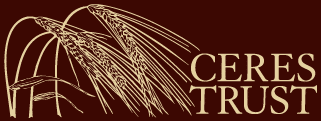Tackling Lameness on Organic Dairy Farms
Gerard Cramer DVM, DVSc
Associate professor of Dairy Production Medicine
College of Veterinary Medicine, University of Minnesota
1365 Gortner Ave, St. Paul, MN 55108
612-625-8184
[email protected]
@dairycowfootdoc
@DairyKNOW
dairyknow.umn.edu/topics
cares.dairyknow.umn.edu/best-practices/lameness
youtube.com/c/GerardCramerdairycowfootdoc
This project was started in 2015 and data collection was completed in May 2017. The project had the following objectives:
- Describe the incidence of lameness and different types of foot lesions on organic dairy farms in Minnesota
- Assess seasonal risk factors for lameness and foot lesions on organic dairy farms in Minnesota.
- Evaluate the association between lameness and productivity (milk yield, culling and reproduction) on organic dairy farms.
- Develop educational materials about lameness prevention strategies targeted at organic and pasture-based dairy farms in the Upper Midwest.
To complete our objectives 17 herds (10 in 2015 and 8 in 2016, 1 herd was included in both years) were enrolled based on a stratified random sample form Organic Valley farms. Herd sizes ranged from 12-300 cows and represented a wide spectrum of organic management styles. Specifically related to lameness management practices only 3/17 herds used a footbath at least once during our study period. Similarly, the use of routine hoof trimming was limited and only 9/17 herds had a hoof trimming visit during our study period. To accomplish objectives, we visited each herd 6 times to collect data. At each visit starting in March-May of each study year all cows were scored for locomotion, hygiene, body condition score, and hock lesions. Every 2nd visit cows, 25 cows that were randomly selected were evaluated in a hoof trimming chute for hoof lesions and sole thickness evaluation. Unfortunately, due to an accident it was not possible to complete the chute evaluation on 3 herds enrolled in 2016. In addition to collecting data from cow and hoof lesions scoring systems, 3 cows per herd had activity monitors placed on them to act as sentinel animals and give us a sense of the number of steps and lying times of cows in each herd.
